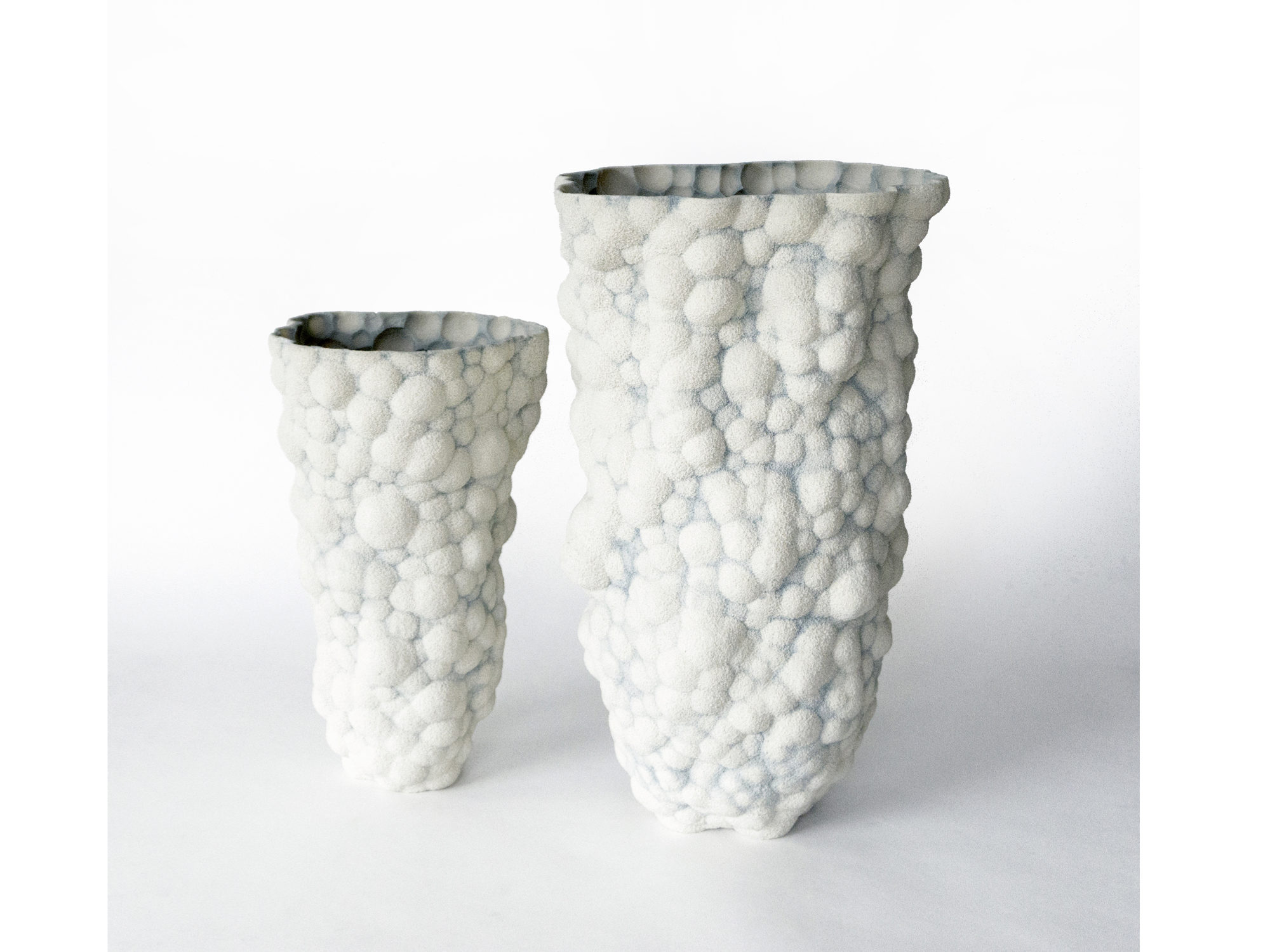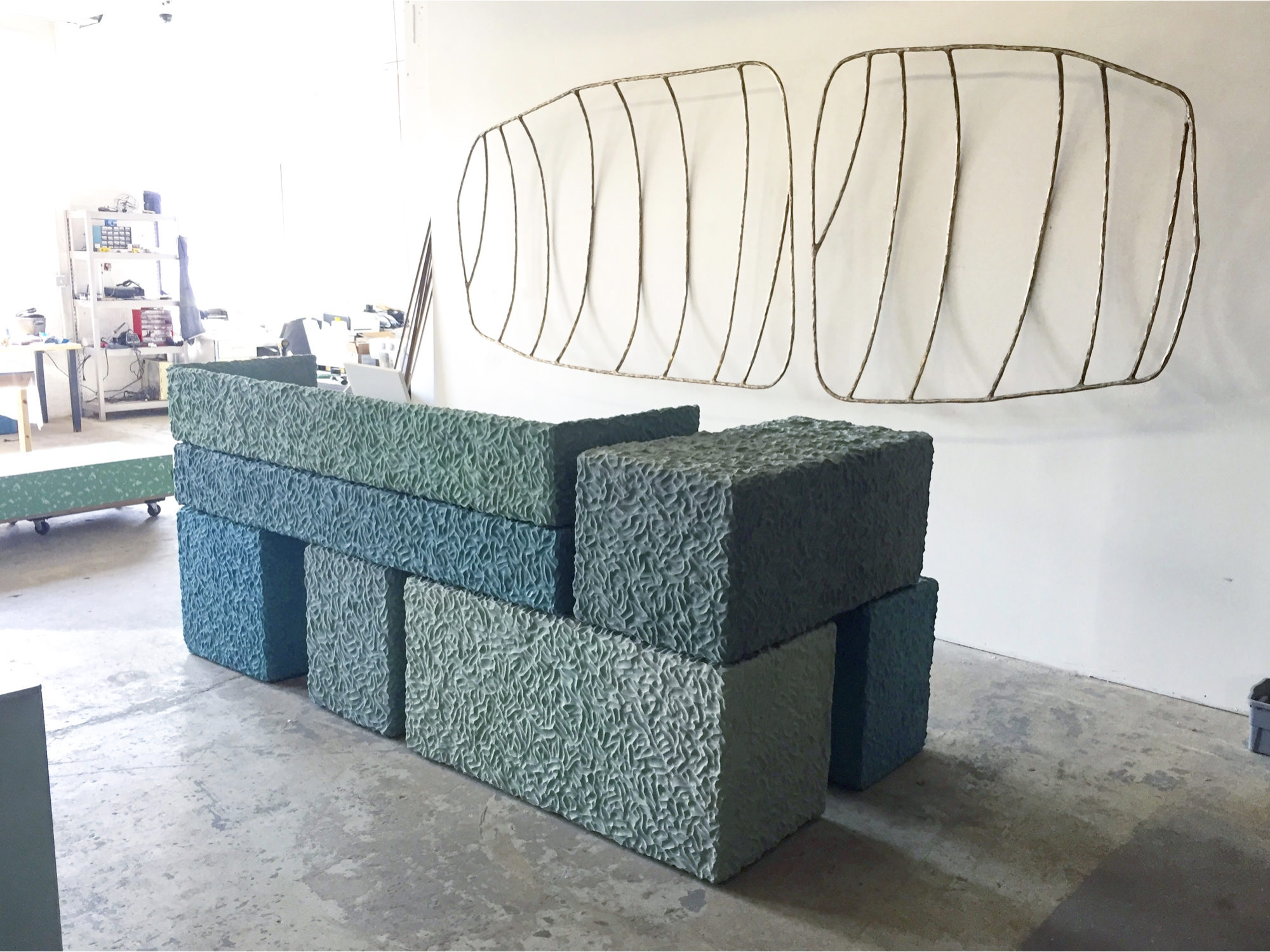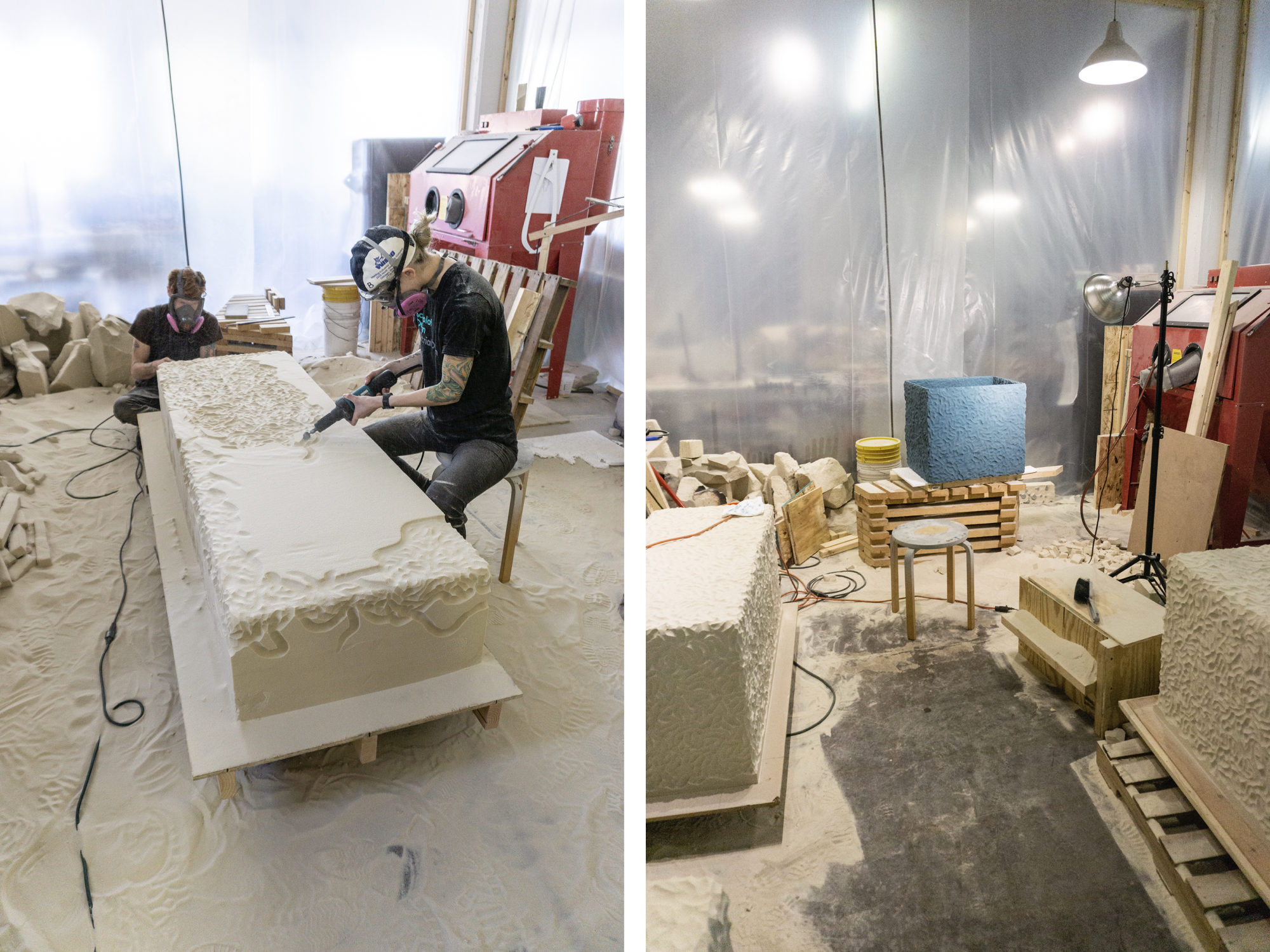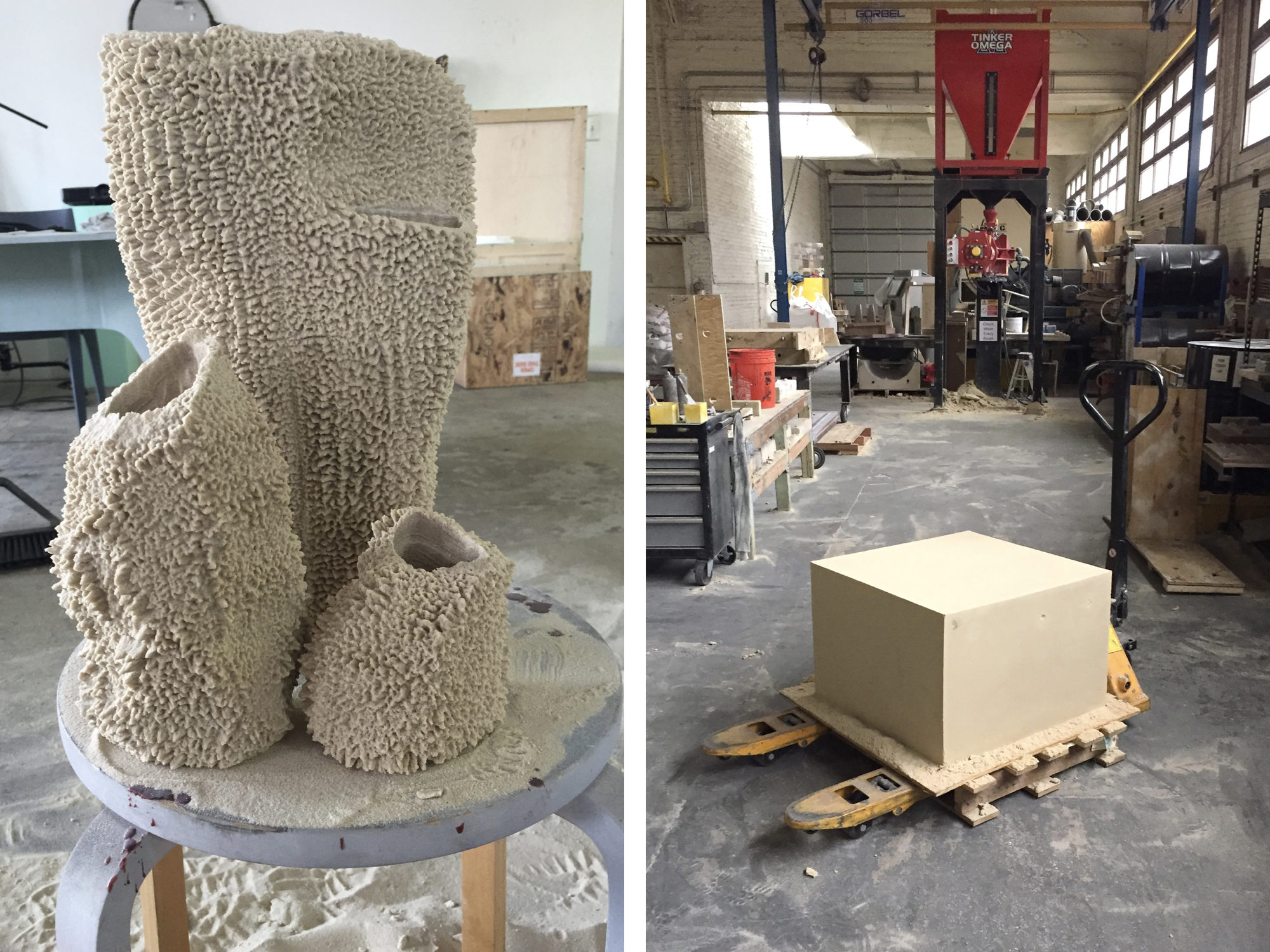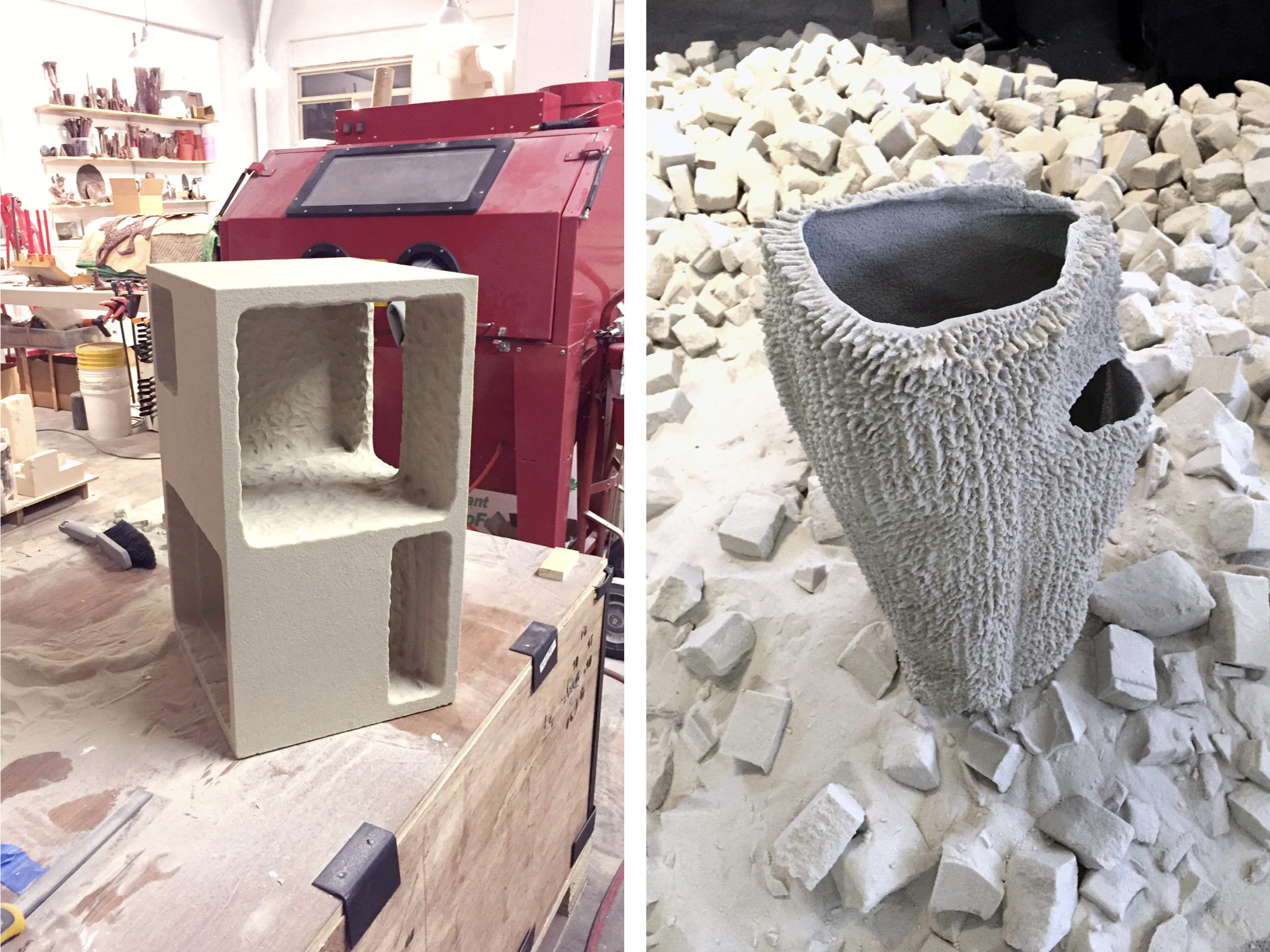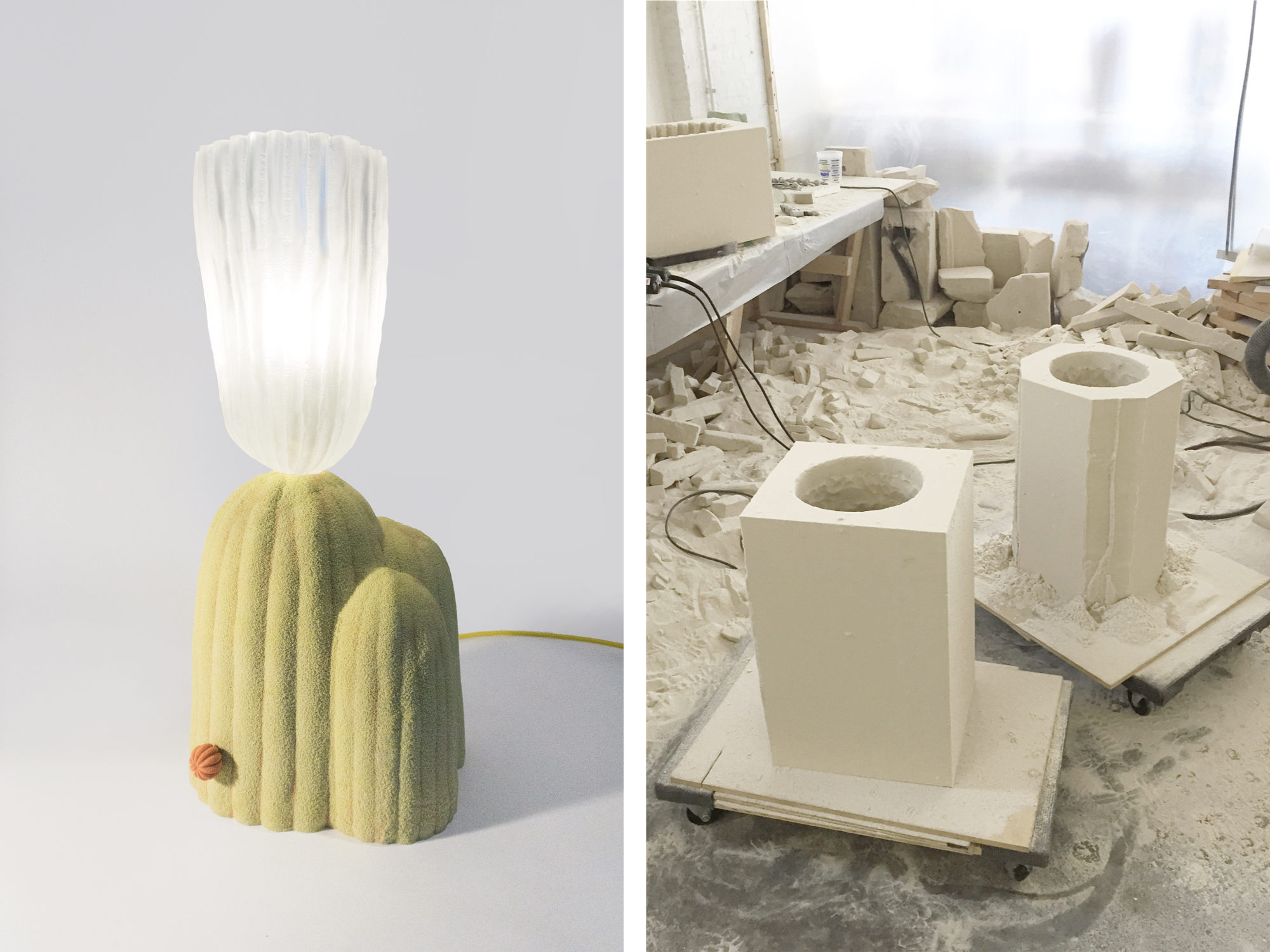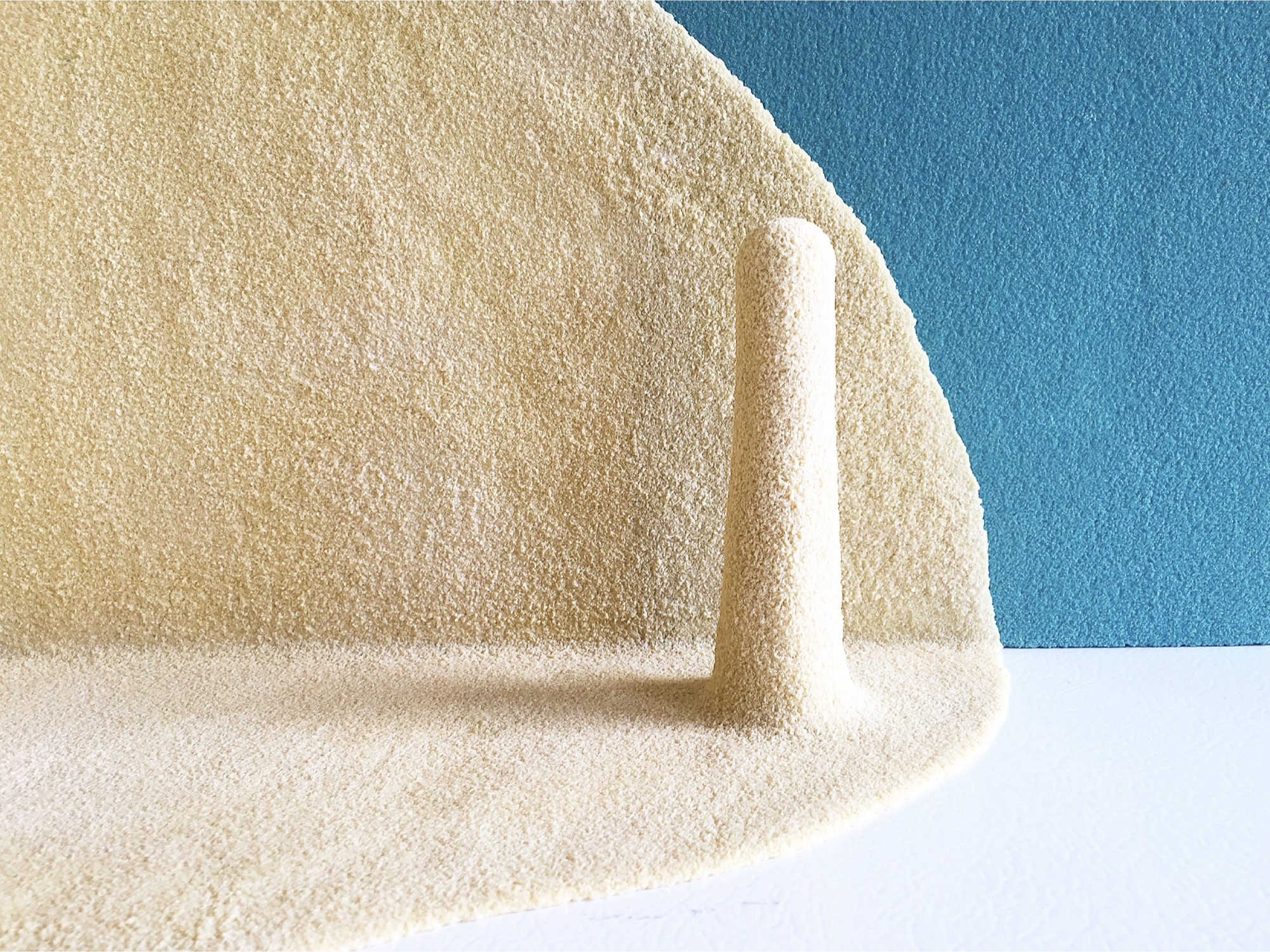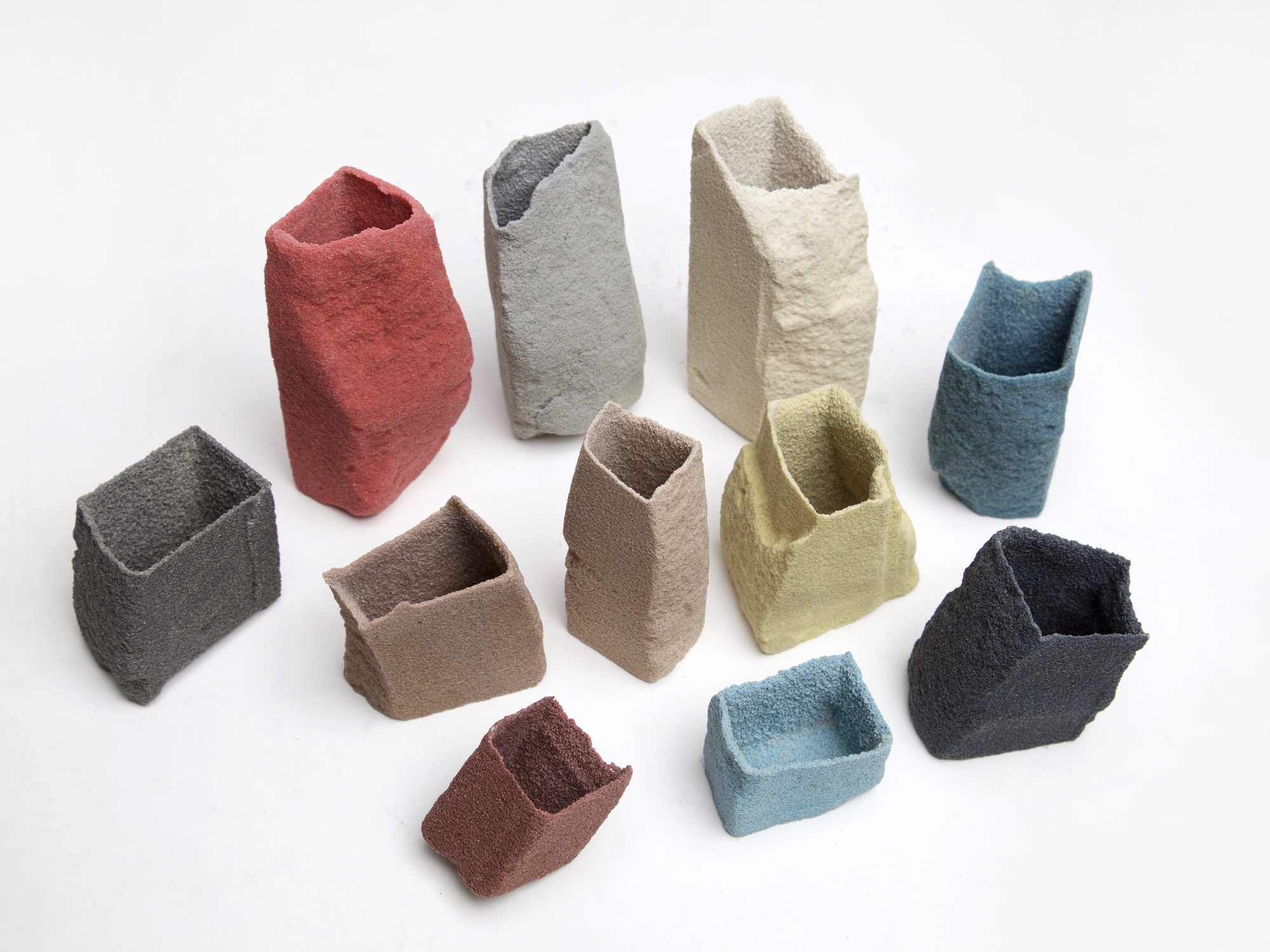If a wet and muggy August in New York isn’t your ideal summer climate, Steven Haulenbeek’s seasonally-minded sculptures might be more to your taste. Unlike his dense, rippling ice-cast bronze collection—a line of objects cast using molds created by pouring hot wax into cavities he chiseled into blocks of ice—the Chicago sculptor’s recent series of lamps, tables, and vessels, including the lumpy one pictured above, feel as if they belong among Joshua trees and a gentle breeze.
Inspired by the leftover sand from his bronze-casting process, in which the grains are used as a barrier between the molten metal and the mold, Haulenbeek sought to elevate this sculptural facilitator into sculpture itself. His ingenious process of resin-bonding, in which colored resin is added to the excess sand and cast into blocks, allows the material to retain its sandiness while achieving a newfound, carveable rigidity. Beginning with a slab of resin-bonded sand (or RBS, as he calls it), Haulenbeek pares it down as one would a chunk of marble, creating different textures with a variety of tools: a wire brush recreates engravings akin to grooved, driftwood-like bark, a die grinder forms bulbous growths. The result: otherworldly pieces in washed-out pastels that evoke dessicated corals, rough-to-the-touch lamps imitating flowering cacti, and granulated tables reminiscent of ancient cave dwellings.
